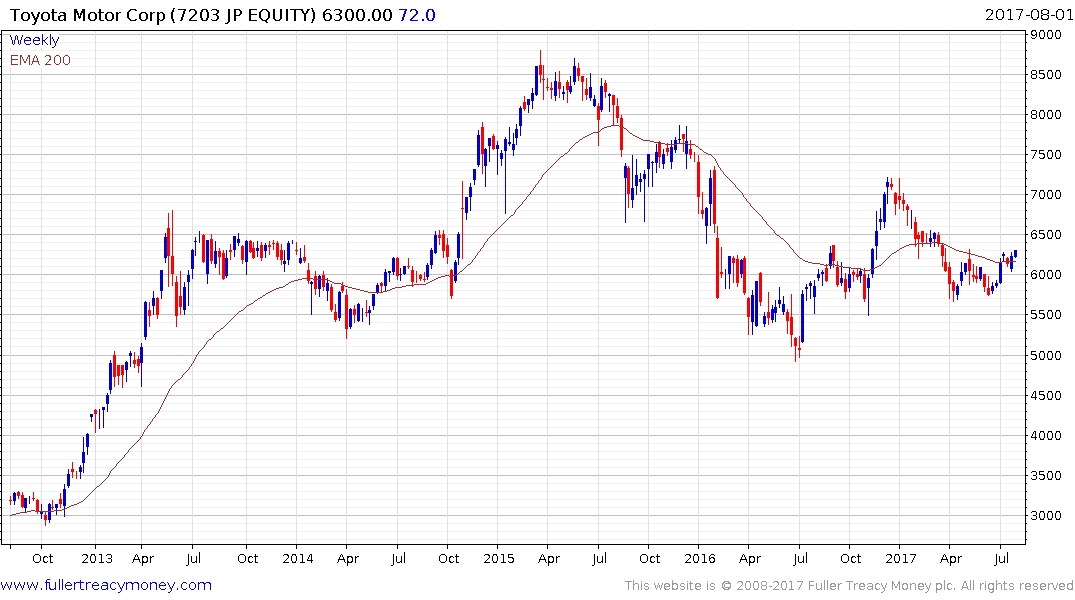Musings from the Oil Patch August 1st 2017
Thanks to a subscriber for this edition of Allen Brooks’ ever interesting report for PPHB. Here is a section:
Toyota Motor Corp. (TM-NYSE) recently disclosed information about patent applications it has filed in the U.S. dealing with new lithium-ion battery technology that could significantly reduce the charging time for EVs and double their range. The company says it has developed the technology to produce a solid-state lithium-ion battery. The new battery employs a solid glasslike plate for transporting lithium ions within the battery rather than using liquid electrolytes. This plate allows closer packing of lithium-ion batteries, which now cannot be packed tightly due to the fire risk it creates. Looser packing means less charge in the battery pack and, therefore, fewer miles travelled on a single charge.
Since these solid-state batteries can be packed more tightly, more power can be put into the same space occupied by a current lithium-ion battery, significantly boosting a vehicle’s range. Another advantage of these solid-state batteries is that they can handle higher charging currents safely. That allows for faster charging times, assuming the remote charging stations are equipped with more powerful charging current equipment.
According to the patent applications, solid-state batteries are less susceptible to temperature variations than liquid electrolyte batteries, which is a hidden issue for many EVs who suffer lost power and range due to extreme heat and cold. Additionally, solid-state batteries eliminate the need for many of the safety features of current lithium-ion batteries, which will help boost their relative cost advantage, thereby improving the economics for EVs.It is interesting that Toyota has made such technological breakthroughs in battery technology since the company had abandoned its efforts to develop a Battery-EV in favor of pushing its hybrid technology. They only revived their BEV in response to Chinese demands in order to compete in its EV market. Now they may have a highly competitive BEV in the market by the early 2020s, assuming their technology continues to perform in line with the patent application claims.
Here is a link to the full report.
The prize for innovation in the battery sector cannot be overstated. Energy storage represents the lynchpin for the evolution of the renewable energy, transportation and utility sectors. The company that can get a better battery with high energy density and faster charging capabilities to market first will quickly gain market share because the cost advantage it will derive will be so acute.
The broader picture is that the pace of innovation continues to advance with the potential for progressively better batteries to greatly enhance the ability of technology to disrupt and increasingly large number of sectors. It also suggests that the pace with which the energy density of batteries is doubling, currently around 5 years, remains on track.

Toyota does not have a particularly consistent chart pattern but has held a progression of higher major reaction lows since July 2016. It is now trading back above the trend mean and a sustained move below 6000 would be required to question medium-term scope for additional higher to lateral ranging.


